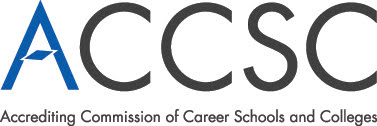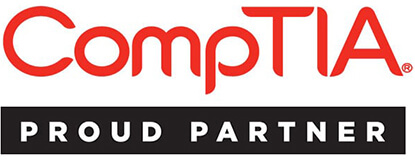5 Steps to Becoming a Licensed Massage Therapist
How many people can truthfully say they love their career? Well, most Massage Therapists tend to say they do. The career boasts below-average stress levels and above-average flexibility, according to U.S. News’ “Best Jobs Rankings.” Massage Therapists can work from home, in salons, spas, high-end resorts, and even cruise ships.
If you’re considering becoming a Massage Therapist but you’re not sure where to start, read these five steps to get a better idea of what you’ll need to do.
1. Learn about the career and establish goals
Massage Therapy is a great career path, but there are some important choices to make before entering the field. You don’t have to have it all figured out beforehand, but it’s important to have goals.
Start by asking yourself what type of massage would you like to learn. There are dozens of different modalities—including deep tissue, sports, Swedish and trigger point. Most Massage Therapists practice several, but only specialize in a few. Typically, you’ll learn many different styles during a Massage Therapy training program, so you don’t have to know yet.
Then, ask yourself if you want to work as a solo practitioner, or for an established spa or massage business? While many Massage Therapists are self-employed, most began their careers as an employee for a couple of years. If you have aspirations of starting your own business, you’ll want to pick a career training program that emphasizes entrepreneurship.
Start considering these options before you enter a program so you can make sure you’ll learn what you need to achieve your goals.
2. Complete a therapeutic massage program
If you have a high school diploma and an interest in massage, you’re qualified to enter a Massage Therapy program. Typically, a diploma in Massage Therapy takes around 15 months and can be completed at a vocational or career training college.
At IBMC College, the Therapeutic Massage diploma program can be completed in as little as 10 months. That’s because the college is career-focused and doesn’t require “fluff” classes that don’t relate to Massage Therapy. Students can skip the extra courses in unrelated subjects required by many community colleges.
Your program of study should include courses like anatomy and physiology, therapeutic massage, and clinical massage applications. Be sure to ask your admissions representative what classes are required for graduation from the program.

3. Obtain licensure
Most states regulate massage, and many others are following suit. In Colorado, licensed Massage Therapists are required to have 500 hours of training from a board-approved Massage Therapy school. That means you’ll need to practice massaging real clients in a professional setting. At IBMC College, students are able to work with the public at the college’s on-site Massage Clinic.
Your Therapeutic Massage program must be nationally accredited, and it needs to be approved by the Colorado Division of Private and Occupational Schools. Candidates for licensure are required to pay an application fee to take the licensure exam. When you pass, you’ll be a fully-licensed massage therapist.
4. Get a business license (optional)
While this step is optional, you’ll need business licensure if you plan to work as a solo practitioner, which accounts for 67 percent of all practicing therapists, according to the American Massage Therapy Association. If you’d like to work in a spa, healthcare setting or somewhere else as an employee, you can skip this step.
Getting a business license is relatively easy in the state of Colorado. You can register your business with the Colorado Secretary of State’s office by filing online.
5. Keep learning and teach others
As in almost any career, the learning never ends. There are so many different techniques and philosophies related to the career that you can add to your professional repertoire, from Swedish massage, to deep tissue, hot stone, Thai, prenatal massage and more. For business owners, there are also things like marketing and customer service that you’ll want to improve upon over the years.
When you become confident and highly-skilled as a Massage Therapist, you may find that you also enjoy teaching others. Take the opportunity to instruct a massage class, or teach the employees at the business you manage or own. Many of IBMC College’s instructors began their careers with training at the college.
The Hardest Step? Getting Started
Massage is a truly rewarding career; It allows for independence, workplace flexibility, and the joy of helping others. Unfortunately, taking the leap can be daunting. Many aspiring Massage Therapists spend months or even years trying to decide if it’s the right fit for them.
Don’t wait—get the information you need to make an informed decision about your Massage Therapy career. Admissions Representatives at IBMC College are knowledgeable in all aspects of the program. They can even help you sit in on a class, take a campus tour, and meet instructors before making the final decision.



